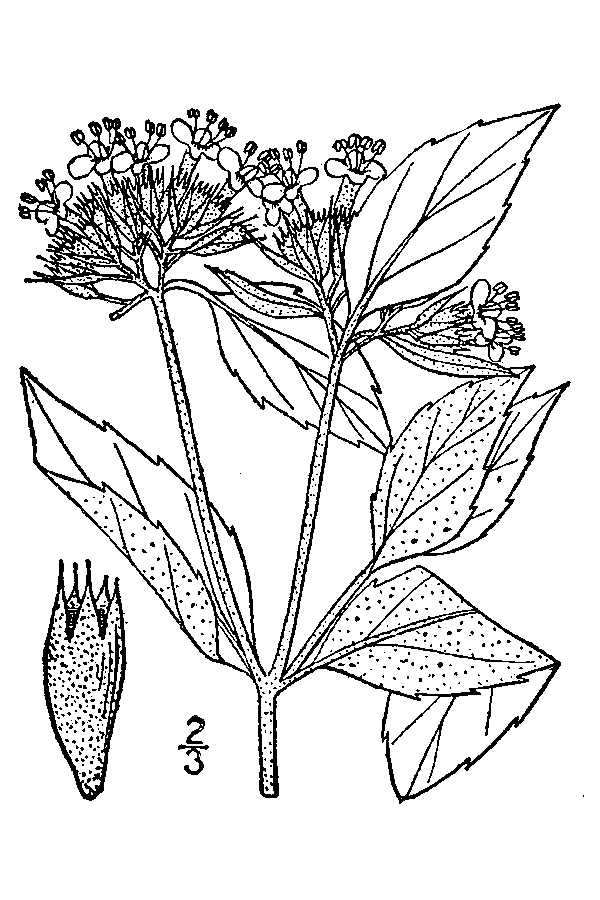- Pycnanthemum incanum
image_width = 225px
image_caption = "Pycnanthemum incanum" var. "incanum"
regnum =Plant ae
divisio = Magnoliophyta
classis =Magnoliopsida
ordo =Lamiales
familia =Lamiaceae
genus =Pycnanthemum
species = "P. incanum"
binomial = "Pycnanthemum incanum"
binomial_authority = (L.)Michx.
synonyms = "Koellia incana" (L.)Kuntze ."
Pycnanthemum incanum" (Hoary Mountainmint, Mountain Mint, Wild Basil, Hoary Basil) is a herbaceous perennial in the mint family, native toNorth America . It is listed as an endangered species inVermont andNew Hampshire , as well as parts ofCanada .It grows to 2 to 4 feet high by 4 feet wide. The stems are covered with a soft, whitish down. White blooms appear from July to September. Pycnanthemum means "dense flower-clusters" in Greek, and the flowers are favored by butterflies, moths, and some species of wasps. A vigorous and often aggressive grower, this plant spreads by long rhizomes. It prefers rocky, gravelly or sandy soil, and typically grows in woods, thickets, fields, and hills, presumably the origin of its common name of Mountainmint.
When crushed, the leaves emit a strong minty aroma, and are often used to flavor teas.
Medicinal use
This species contains
tannin and is considered to be anastringent .The
Choctaw put the mashed leaves in warm water, which the patient drank, and which was poured over the head to relieve headaches. For patients who were sickly all the time, the leaves were mashed in water, the doctor took a mouthful of water, and blew it onto the patient, three times on the head, three times on the back, and three times on the chest. Before the next sunrise, the patient was bathed in the medicine.The Koasati mashed the leaves in water, and used the water to treat laziness. The patient bathed his face in the cold water and drank it. For nosebleeds, the plant was wetted, and put up into the nostrils to stop the bleed. The roots were boiled along with Black Willow, and drunk to relieve headache.
It is considered to be a food source for large mammals, as well.
References
* [http://plants.usda.gov/java/profile?symbol=PYIN USDA Plants Database]
* [http://www.e-laws.gov.on.ca/DBLaws/Regs/English/900328_e.htm Endangered Species Act of 1990, Ontario, Canada]
*Darlington, William "Flora Cestrica", published by Lindsay and Blakiston, 1853
*Wood, Alphonso "A Class-book of Botany", published by Manufactering Co., 1851
*Gray, Asa "Gray's School and Field Book of Botany, published by Ivison, Blakeman, Taylor, & Company, 1879
*Elliot, William "The Washington Guide", published by F. Taylor, 1837
*Taylor, Lyda Averill "Plants Used As Curatives by Certain Southeastern Tribes", published by Botanical Museum of Harvard University, Cambridge, MA, 1940
Wikimedia Foundation. 2010.

